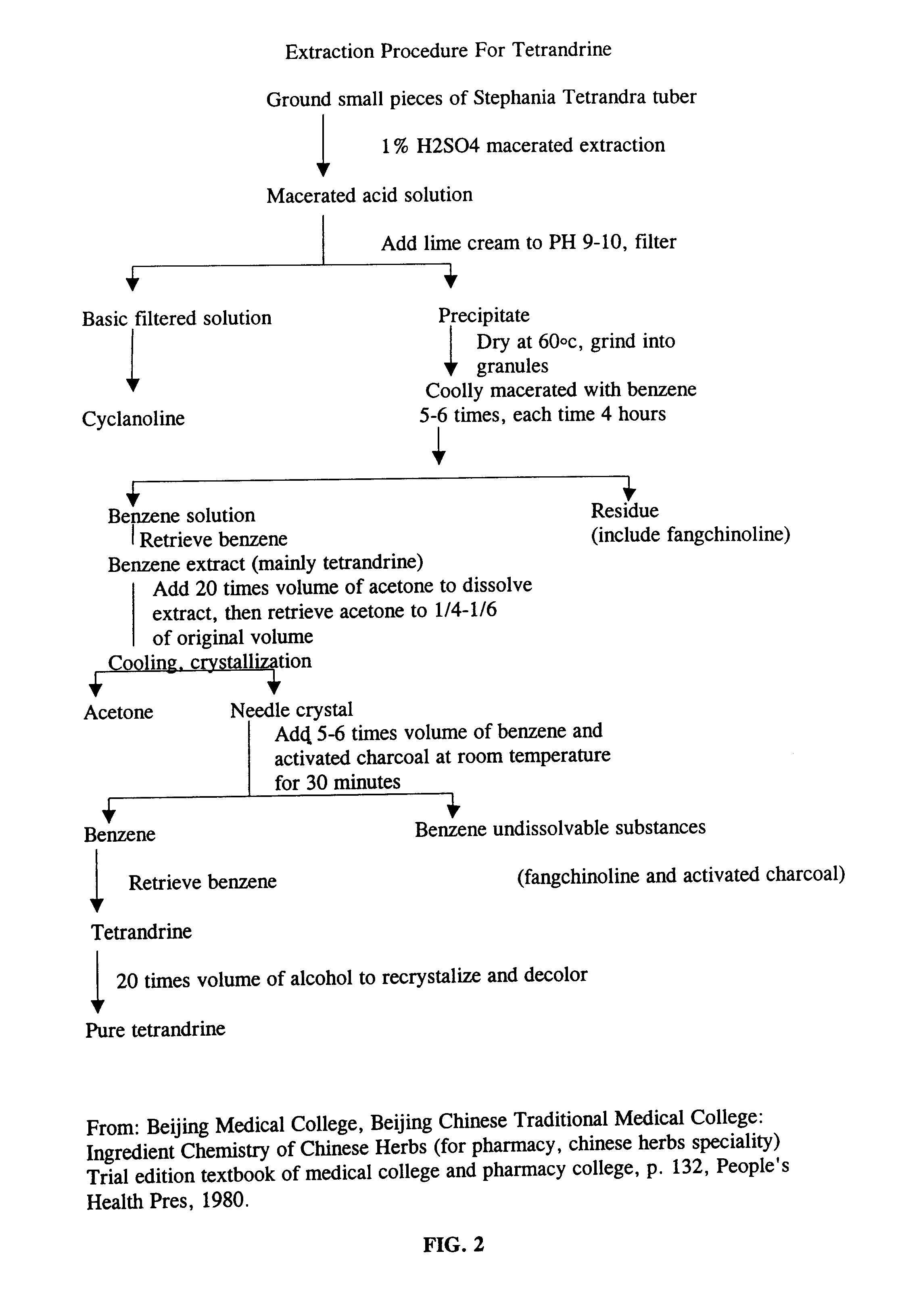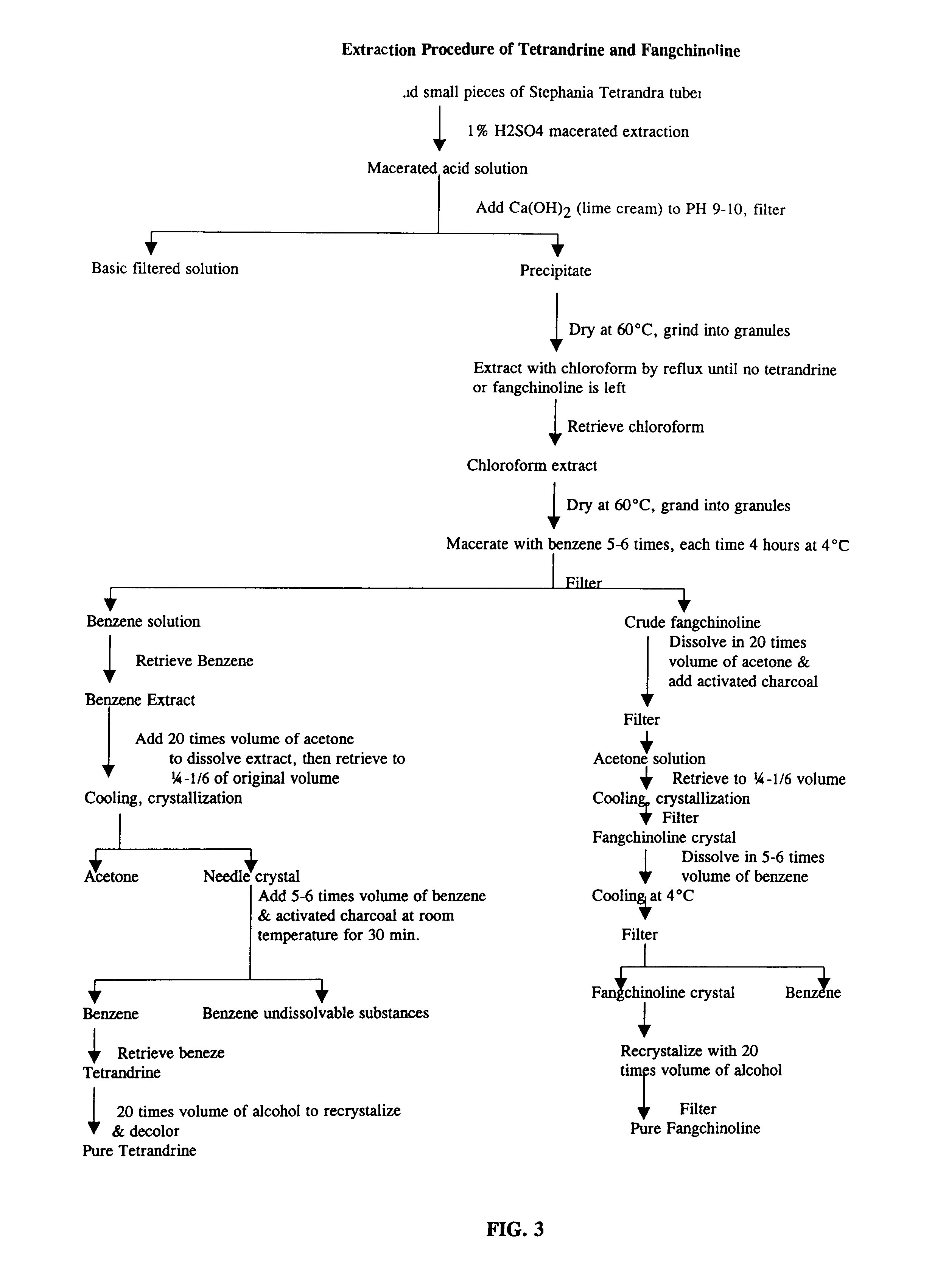Method for extracting bisbenzylisoquinolines
a technology of bisbenzylisoquinoline and bisbenzylisoquinoline, which is applied in the field of extraction methods for bisbenzylisoquinolines, can solve the problems of insufficient recovery of tetrandrine and fangchinoline, inability to soluble in chloroform, and substantial portion of undesirable impurities, etc., to achieve a higher yield of tetrandrine and less expensive
- Summary
- Abstract
- Description
- Claims
- Application Information
AI Technical Summary
Benefits of technology
Problems solved by technology
Method used
Image
Examples
Embodiment Construction
A method in accordance with the present invention, for obtaining purified tetrandrine and purified fangchinoline from the roots of Stephania Tetrandra is schematically illustrated in FIG. 3. The method of this invention involves obtaining, from roots of Stephania Tetrandra, a precipitate comprising tetrandrine, fangchinoline and compounds which constitute impurities. This precipitate can be obtained by macerating the roots of Stephania Tetrandra in an acidic solution to leach tetrandrine and fangchinoline from the roots, separating the acidic solution (containing tetrandrine and fangchinoline) from the macerated roots, and adding a base to the acidic solution to form a basic solution and to cause precipitation of tetrandrine and fangchinoline. The resulting precipitate can be separated from the basic solution, such as by decantation, filtration, and dried, such as by evaporation at 60.degree. C. The precipitate is then contacted with chloroform to form a chloroform solution in which...
PUM
| Property | Measurement | Unit |
|---|---|---|
| temperature | aaaaa | aaaaa |
| temperature | aaaaa | aaaaa |
| acidic | aaaaa | aaaaa |
Abstract
Description
Claims
Application Information
 Login to View More
Login to View More - R&D
- Intellectual Property
- Life Sciences
- Materials
- Tech Scout
- Unparalleled Data Quality
- Higher Quality Content
- 60% Fewer Hallucinations
Browse by: Latest US Patents, China's latest patents, Technical Efficacy Thesaurus, Application Domain, Technology Topic, Popular Technical Reports.
© 2025 PatSnap. All rights reserved.Legal|Privacy policy|Modern Slavery Act Transparency Statement|Sitemap|About US| Contact US: help@patsnap.com



